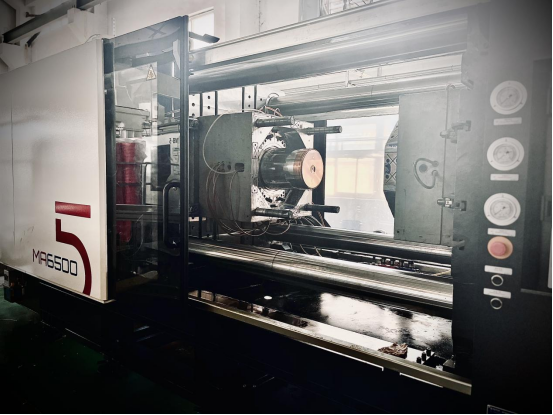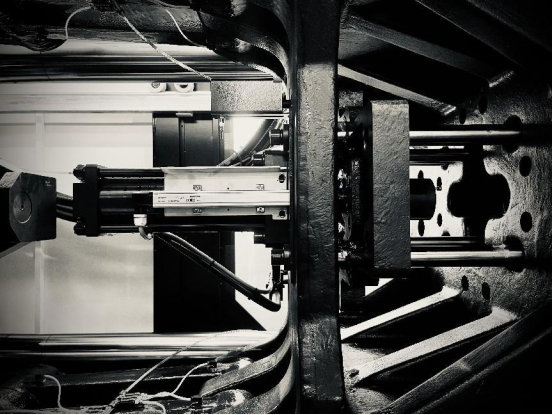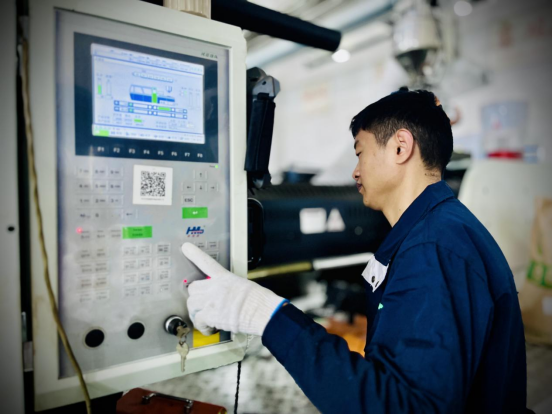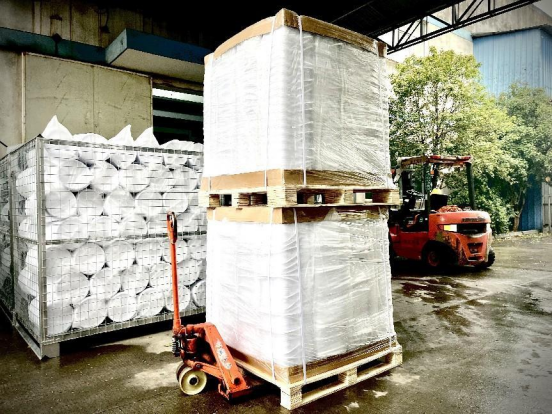What is plastic injection molding? Injection molding remains important in high-precision casting for industrial packaging manufacturing, alongside popular method of CNC machining and 3D printing. The manufacturing process produces identical plastic buckets by injecting molten plastic raw material into a mold. People use them in various industries, including automotive, aerospace, electronics, packaging, medical, and consumer products.
Manufacturers commonly use plastic injection molding machines to make containers and packaging. Various types have different features and abilities.
The size of the machine can also vary depending on the size of the parts that you produce. Some machines are better for bigger-sized and high-quantity production such as 20L buckets or 5 gal plastic pails. Some containers and tools are ideal for small injection molding machines. These include 1-gallon containers, lids, handles, filters, bucket openers, toilet covers, and tamper-evident lids.
Injection molding is a process that changes plastic from solid to liquid and back to solid. This is done to create a new shape. It helps make lots of parts cheaper, with less waste and faster than other methods, while being good for the environment.
Undeniable, it is faster and more cost-efficient especially if you are producing a large quantity. Injection molded buckets are robust and durable, with high precision and repeatability. Next, we will discuss how injection molding machines are used to make buckets and pails in large quantities.
Injection Molding Process
How does plastic injection molding work? We start from the hopper, the plastic raw material is stored in the hopper and is placed on the top of the extruder motor machine, this metal container stores plastic raw materials in PP/ HDPE cylindrical pellets. Once the resin pellets are loaded and digital instructions are programmed, raw plastic granules fall from the hopper onto the rotating screw in the barrel where the flights of screw convey it forward and are gradually melted as it moves forward.
Melting process: The heating elements(heat bands) wrapping around the outside barrel has a high temperature of 260℃ for quick melting and maintain the plastic raw material smoothly flowing by screw rotating. When the set volume of plastic on the head of the screw accumulates, it is enough molten plastic in front of the screw, after then the screw stops rotating.
On the other side, the clamp mechanism presses the push bar on the moveable half to the stationary half and waits until two platens attach in closure. Then the screw acting as a plunger pushes molten plastic and moves through the runner via the gate and into the selected mold cavity by nozzle for forming the required shape.
This is the injection phase of the process after the cavities fill 90-95%. meanwhile, the thermometer controls the temperatures to make a frozen layer to cool down the melted plastic into a solid phase and freeze the gate.
Let melted plastic continue to cool down in the mold for 10 seconds until rigid enough to withstand ejection. That means the plastic is transformed into a new solidified shape. if possible, the robot arm can extended down and taken off items from the top of the mold.
Now the screw moves back plasticating resin for the next injection shot. This is how a complete molding cycle process works.
Here are the simplified steps of the process below
- Insert IML printing layer( if need in-mold labeling printing)
- Mold closes
- Screw rotating and moving forward
- Melting by heat bands
- Frozen polymer skin forms at the mold wall
- Injection into Cavity
- Pressure applied to polymer
- Gate freeze
- Water Cooling continues for 10 sec
- Mold open
- Fetch out by robots
Advantages of Buckets Production
- High Precision: We explained how to work in the injection molding produce. The key is the mold. It is precision platens that can be used repeatably and long-lasting. It has consistent dimensions and tight tolerances, resulting in uniform bucket and pail products during molding cycles.
- Efficiency: Plastic bucket production rates are higher by using injection molding machines than other processes. One second of the filling process is achievable, 9 seconds packing procedure, then 10 seconds for cooling, mold opens in 2 second for ejection, one full injection molding cycle costs only 20 seconds for making 5 gal plastic buckets with injection molding machines, catering to high-volume demands effectively.
- Cost-Effectiveness: In Innopack® Plastic container and packaging which is mostly upgraded to a professional automation produce line. 20 different types and sizes of injection molding machines, with robots and conveyer beltscombined with wire handle machines and thermal printing machines, reduced over 300% time for one plastic bucket producing and decorating. By transporting raw materials through a pipeline to the hopper on 20 different machines. It minimizes material waste and reduces labor costs compared to traditional manufacturing methods.
- Design Flexibility: by switching the mold platens from the factory’s mold library, 1gal -8gal, EZ peel lid to gamma sealed lids, and producing plastic packing accessories, injection molding machines fit up to hundreds of plastic parts when customers demand such as costumed colors, thickness, materials, heights, shaped buckets
- Strength and Durability: Polypropylene(PP) and high-density polyethylene(HDPE) are the two most common raw plastic materials in injection molding buckets. Making buckets smoothly without a stop ensures the robustness of injection-molded buckets, capable of withstanding heavy loads and harsh environments.
Sustainability
We live on a precious green planet —“Earth”. With increasing global consumption and their natural resistance to degradation, plastic materials and their accumulation in the environment are increasingly concerning. Innopack® plastic packaging company complies with eco-friendly and environmental sustainability policies.
Innopack® provides a plastic pulverizer for recycling plastic material from self-produced defective plastic buckets and accessories. And it allows reusing recycled plastic pellets to produce new buckets as lower-priced eco-buckets for wholesale. By following the Environmental Protection Bureau’s requirement, all injection molding machines in Innopack® must work with waste gas suction fans, and then discharge into the atmosphere via carbon decomposition.
In 2024, Innopack® is building several photovoltaic power stations for solar energy production. It approximately will save over 35% of traditional electrical energy usage.
In conclusion, Injection molding production is a high-precision casting that is commonly used in the manufacturing of different sizes ranging from plastic buckets and packaging accessories. It wins at high precision, robustness, repeatable production, and cost-effective advantages in the plastic and packaging industry. If you are looking for a fast and high-quality plastic bucket solution in demand, we‘d like to help you. Please enquire us for more information.





